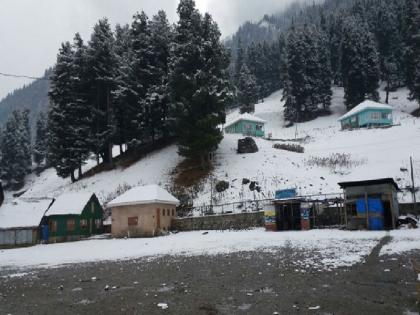Kashmir's Winter Charm Melts Away as Dry Spell Grips Region
By Lokmat English Desk | Updated: January 10, 2024 11:35 IST2024-01-10T11:35:14+5:302024-01-10T11:35:32+5:30
Gulmarg's winter charm, usually resembling a heavenly scene with snow blanketing the landscape like a soft cotton quilt, has ...

Kashmir's Winter Charm Melts Away as Dry Spell Grips Region
Gulmarg's winter charm, usually resembling a heavenly scene with snow blanketing the landscape like a soft cotton quilt, has taken a stark turn this year. A noticeable dry spell seems to have gripped Kashmir and Gulmarg. Recent reports indicate an alarming 79 percent rainfall deficit in the Kashmir Valley for the entire month of December, leaving the much-awaited snowfall eagerly anticipated but yet to materialize. So those who are planning to visit Kashimir to experince Snowfall then they might get disappointed.
Mukhtar Ahmad, Director of the Kashmir Meteorological Centre, informed ANI that December and the initial week of January have witnessed an unusual dry spell. Unfortunately, the weather forecast doesn't bring much optimism, as dry conditions are expected to persist until at least January 12. Ahmad elaborated, stating, "There are no major precipitation chances in the coming days. The weather may remain dry till noon of January 16."
The noticeable absence of early snowfall, a customary occurrence in the past three to four years, is raising concerns. The persistent influence of El Nino since November is deemed responsible for disrupting the typical climatic patterns of the valley, a deviation from the norm that extends into the upcoming month.
What is El Nino and how does it affect weather?
El Nino's influence on weather patterns is extensive, causing the Pacific jet stream to shift southward and extend eastward. This shift results in wetter conditions in the Southern US and drier, warmer conditions in the North. Additionally, marine life off the Pacific coast is affected. In Southeast Asia, El Nino typically leads to drier-than-average rainfall and warmer temperatures from December to February.
In Kashmir, El Nino manifests as prolonged dry spells, milder winters, and reduced snowfall. Experts caution that the region is likely to face more frequent and extended droughts in the future, with climate change indicators becoming increasingly apparent. The consequences are evident in local agriculture, where traditional practices are vulnerable to climatic disruptions. Saffron farmers in Kashmir, for instance, are already experiencing the adverse effects of prolonged dry conditions, highlighting the challenges posed by shifting weather patterns.
Open in app